January 9th, 2008
Bolbitis species have long been regarded as a low-light, undemanding plant, that survives in most aquariums. It’s a nice looking fern, adds a deep green to the tank, and can be attached to driftwood, or other hardscape materials. A couple months ago, a species of Bolbitis showed up at a GWAPA meeting that our club hadn’t seen before. This is what I’m calling Bolbitis sp., since I don’t know the proper name.
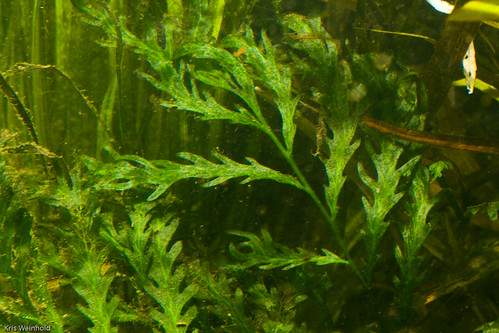
At first, we suspected that it was a terrestrial fern, but due to the quantity brought to auction, it was clear that it grow just fine underwater. It was sent to the club by a rainbowfish breeder and collector, who happened to order it from an order source. The leaf form has many more indentations than the usual type. I’ve been keeping it in my 75G aquarium, and growth has been quite slow, but it is growing nevertheless. If anyone can identify the species of this bolbitis, please leave a comment.
Posted in 75G Tank Log, Plant Profiles | 3 Comments »
January 7th, 2008
My new favorite accent in the 75G aquarium is Rotala macrandra, a beautiful, but delicate red stem plant. Notorious for being a more difficult plant to grow, I can understand its’ reputation. The plant doesn’t seem to have much of a problem growing, but if I go too long without a water change, I start to notice little holes in the leaves.

Additionally, leaves that reach the surface, appear to easily get holes, or fall apart, instead of converting to emersed growth. That may also be due to the heat from the light as they get rather close to them. Nevertheless, it is a gorgeous plant, with striking orange and red tones. I started with a single stem, and in just a month or two, I’ve now got a decent sized bush of R. macrandra. I’m hoping to grow it out even further, as I need more red in my 75G to offset the large number of green plants in there.
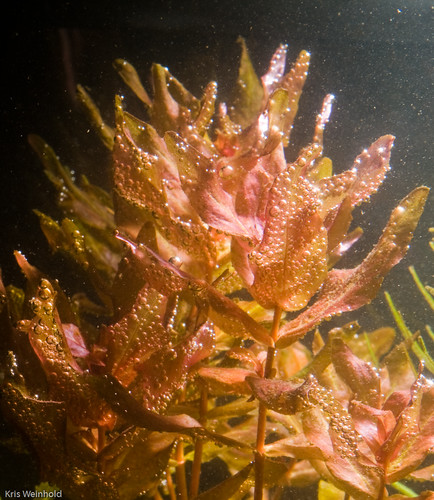
Fortunately, R. macrandra has been in the hobby for some time, so it often shows up in some of the more ambitious fish shops. It you have the chance to buy it, do. However, make sure that you have adequate lighting, CO2, and fertilizers, or the plant won’t stand a chance.
Posted in 75G Tank Log, Plant Profiles | 9 Comments »
January 5th, 2008
Today we took a walk near our house to some trails along the Middle and Little Patuxent Rivers. Even though we’ve had some of the coldest days of the season recently, I wasn’t expecting there to be a lot of ice on the river, as today it was well above freezing. To my delight, I was wrong; there were ice crystals everywhere along the banks and rocks.
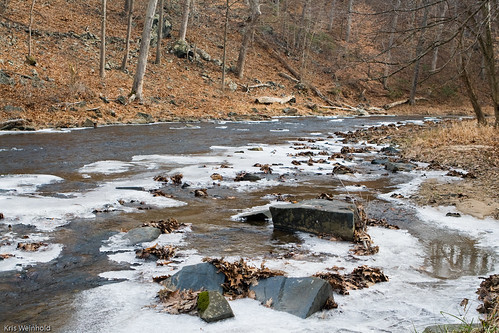
It’s amazing how beautiful the ice can be, forming in so many different configurations. My favorite ones are the long, spiky, crystals like the ones below. Many of the rocks that are normally visible were completely consumed by ice. That said, the ice itself wasn’t really all that thick, full of air pockets, and requiring little force to be broken.

Some of the ice was a bit mushier like this below. I imagine that all of the asiatic clams normally found in this area are deep into the riverbed, trying to keep warm. Obviously, the small amount of the aquatic plant-life found in this river has long since melted away.

My favorite set of ice crystals from our walk were the ones shown below. It appeared that after the ice formed, the river and sun worked from above and below to create holes, making the unique pattern seen below.
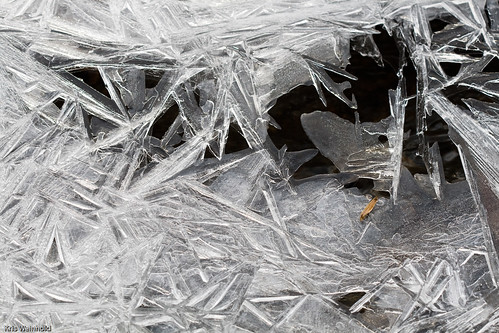
At a distance, some of the ice formations looked more like snow banks along the river. Very pretty, creating a serene feeling in the winter forest. Despite lacking the lush green growth, and animal calls normally heard in warmer weather, the forest maintains its beauty year round.
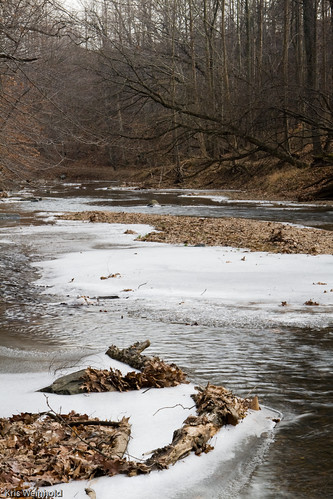
Posted in Maryland Habitats | Comments Off on Icy Cold River
January 1st, 2008
A couple of weeks ago, I got some shrimp from another GWAPA member, and in the bag, he sent along a nice new species of Hygrophila for me to try out. We don’t know the exact species name, but it’s being referred to as Hygrophila sp. ‘Low grow’, due to the way that it grows compared to some other Hygro’s.

The plant seems to creep along the substrate, even in more high light conditions. I’ve grown the common Hygrophila polysperma in this same fashion before, but it requires constant trimming to maintain it low to the ground. This ‘Low grow’ does not appear to need the same. In addition, I’ve found it to be a much slower grower than other species of Hygrophilia which can be outright weeds if left unchecked. The leaves are larger than that of H. polysperma, and contain more pronounced (prettier) vains.
Due to the leave size, I may not use it in many of my aquascapes, but it might be perfect for some larger scapes. I’m going to wait to to let it further grow out before I fully decide that, however.
Posted in 75G Tank Log, Plant Profiles | 1 Comment »








